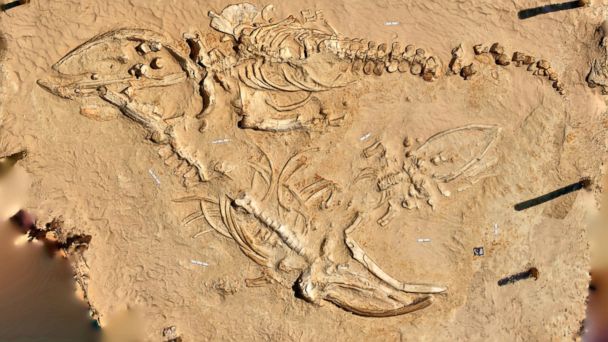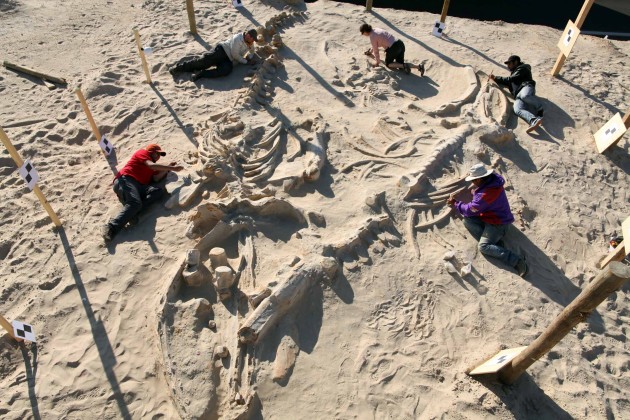In 2010, a mysterious whale graveyard was found in the middle of Chile’s Atacama Desert, one of the driest places on Earth. The area was covered by the sea millions of years ago, so the discovery of marine mammal fossils wasn’t a surprise. But no one knew why the fossils of so many whales – at least 40 – would be found in the same location.
A paleontologist working with the Smithsonian Institute recently discovered the answer: a common ocean algae. The algae bloomed profusely in the area 6 to 9 million years ago, triggered by iron-rich runoff from the Andes Mountains. The algae produced a deadly neurotoxin that caused rapid organ failure and death when ingested.
One major clue was the fact that all of the whale skeletons were facing belly-up – an indication that they died at sea as opposed to beaching themselves en masse as sometimes seen in marine mammals today. Other clues include fossil algae mats found on the skeletons and the presence of an assortment of other marine mammal fossils in the area. These additional fossils indicate that a large event killed them all at the same time.
Source: Smithsonian Science

